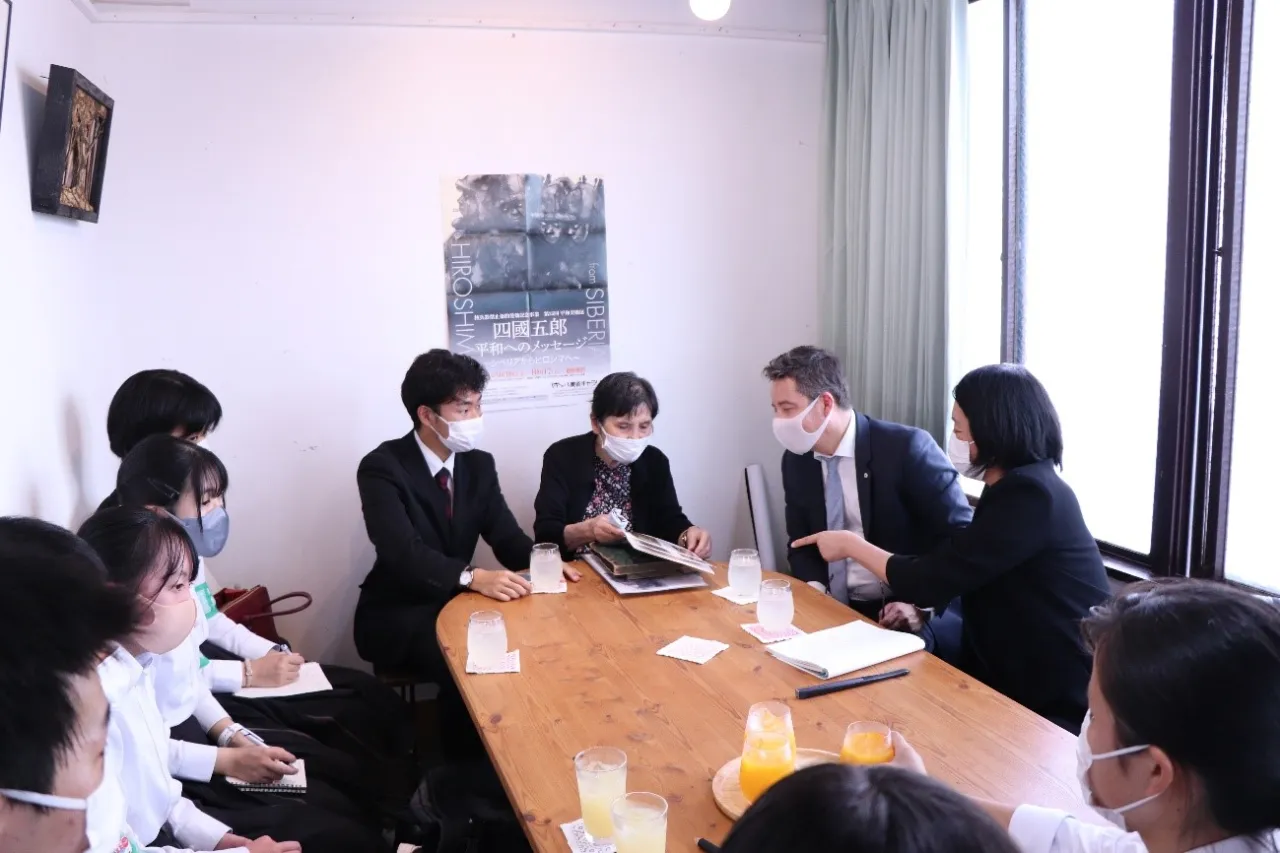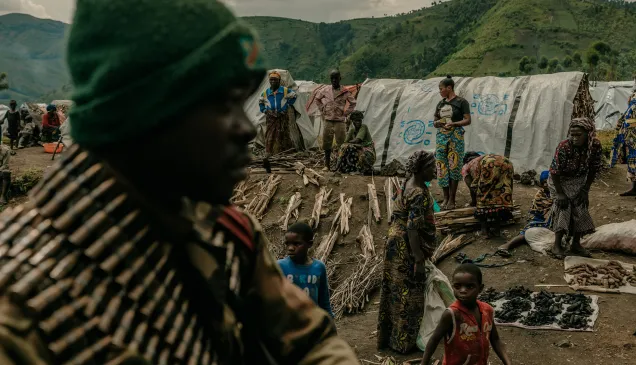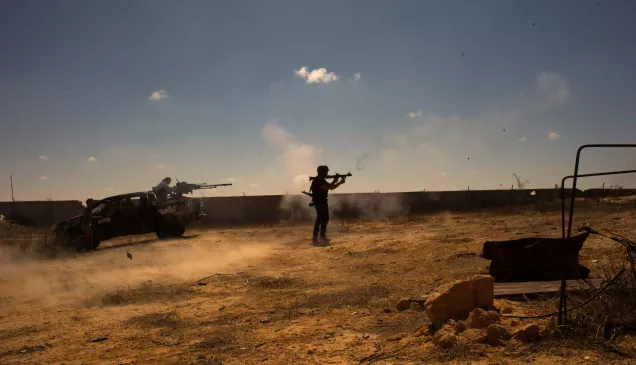Meeting an A-bomb survivor after 76 years: A testimony of hope
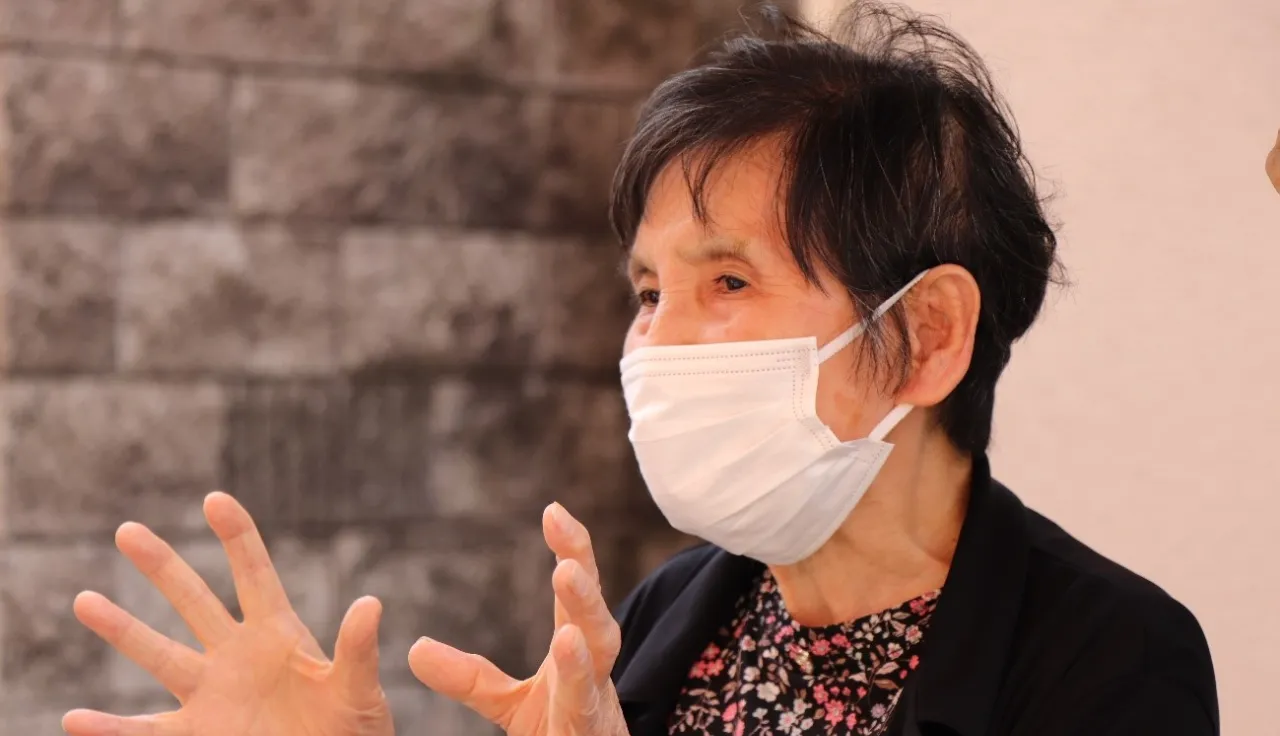
As he gears up to participate in the First Conference of the States Parties to the Treaty of Nuclear Weapons in Vienna (Austria) from 21 to 23 June 2022 as an ICRC youth representative, Keita Takagaki recounts a meeting he witnessed between 91-year-old Chieko Kiriake, a hibakusha (or an atomic bomb survivor), and head of the ICRC’s delegation in Tokyo, Régis Savioz.
The interaction, which goes back to September 2021, left a huge impression on the mind of Keita, who has been advocating for abolition of nuclear weapons. Along with Keita, another youth activist, Kako Okuno, will also participate in the conference. Okuno is often dubbed the "Greta Thunberg of Hiroshima".
On 6 September 2021, approximately 76 years after the first atomic bombing in human history, Régis Savioz and Chieko Kiriake met at the clothing depot of Imperial Japanese Army in the city of Hiroshima.
The depot was used to manufacture and store soldiers' uniforms, military shoes and rucksacks before it was bombed. Though the blast caused its iron doors to develop bends, the building is still standing. Back then, it served as a temporary first-aid station and many injured flooded into the facility even though it was 2.7 kilometers away from the hypocenter. It is said that many died there without receiving proper medical treatment.
While taking Savioz on a tour of the depot, Kiriake shared her story, beginning with her childhood memories before the war escalated. "There used to be a ditch here, where crucian carps and killifishes swam. We used to play here, catching them with a bucket and a net."
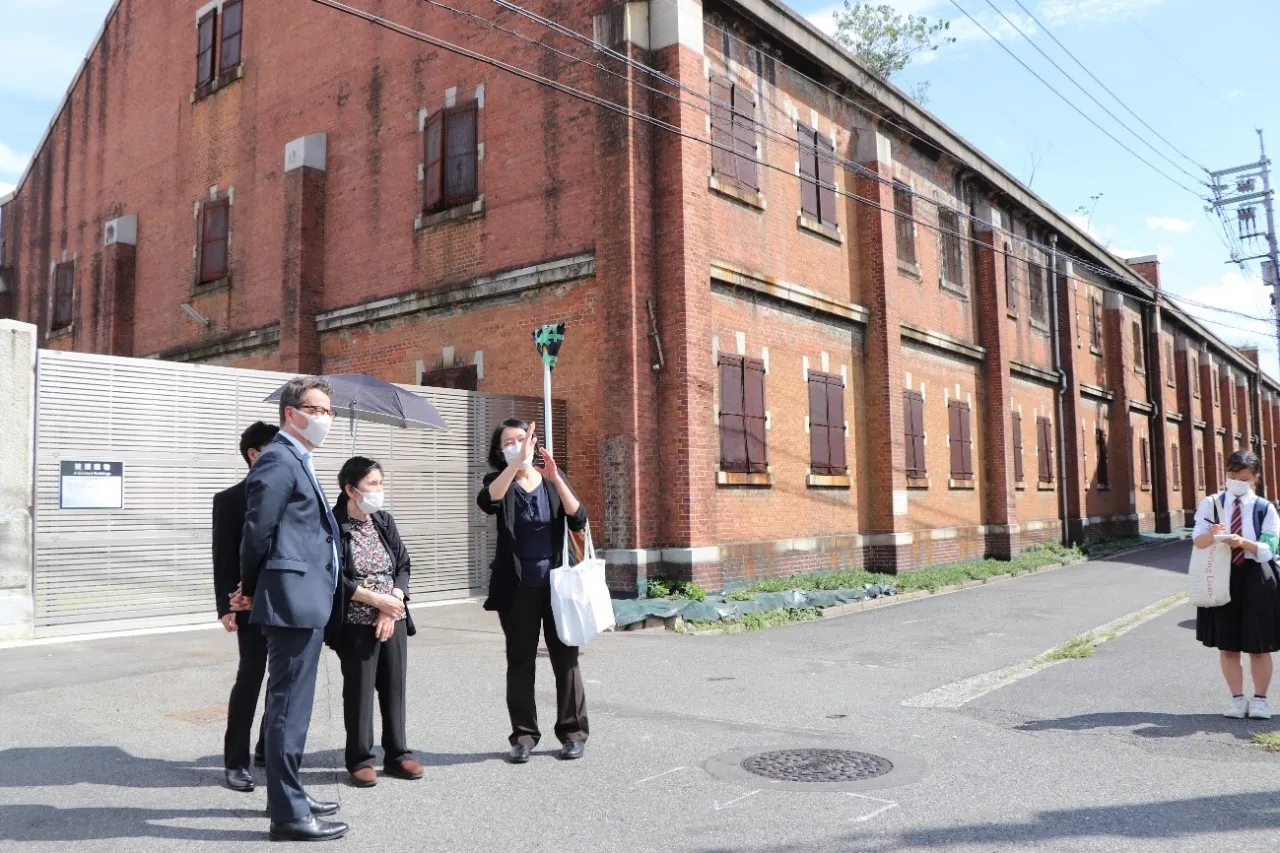
6 August 1945
On the morning of 6 August, the day the atomic bomb was dropped on the city of Hiroshima, 15-year-old Kiriake was crossing a bridge on her way to the hospital. Just as she stepped into the shadow of a riverside warehouse to rest for a while, the bomb exploded.
The split-second decision to stop for a breather saved her life. After the end of the war, she visited the Hiroshima Peace Memorial Museum and found the belongings of a girl who had been killed while crossing the same bridge at the same moment that day. According to her family, the girl died "with her eyeballs popped out and her ears torn off".
Due to labour shortage during those days, the students of national elementary schools were required to work in city areas and factories rather than attend their classes. As a result, a massive number of students either perished or sustained grievous burn injuries due to the atomic bomb that day. Those who suffered severe burns jumped into nearby rivers, only to float on the surface as dead bodies. It is said that the rivers of Hiroshima were covered with corpses that fateful day.
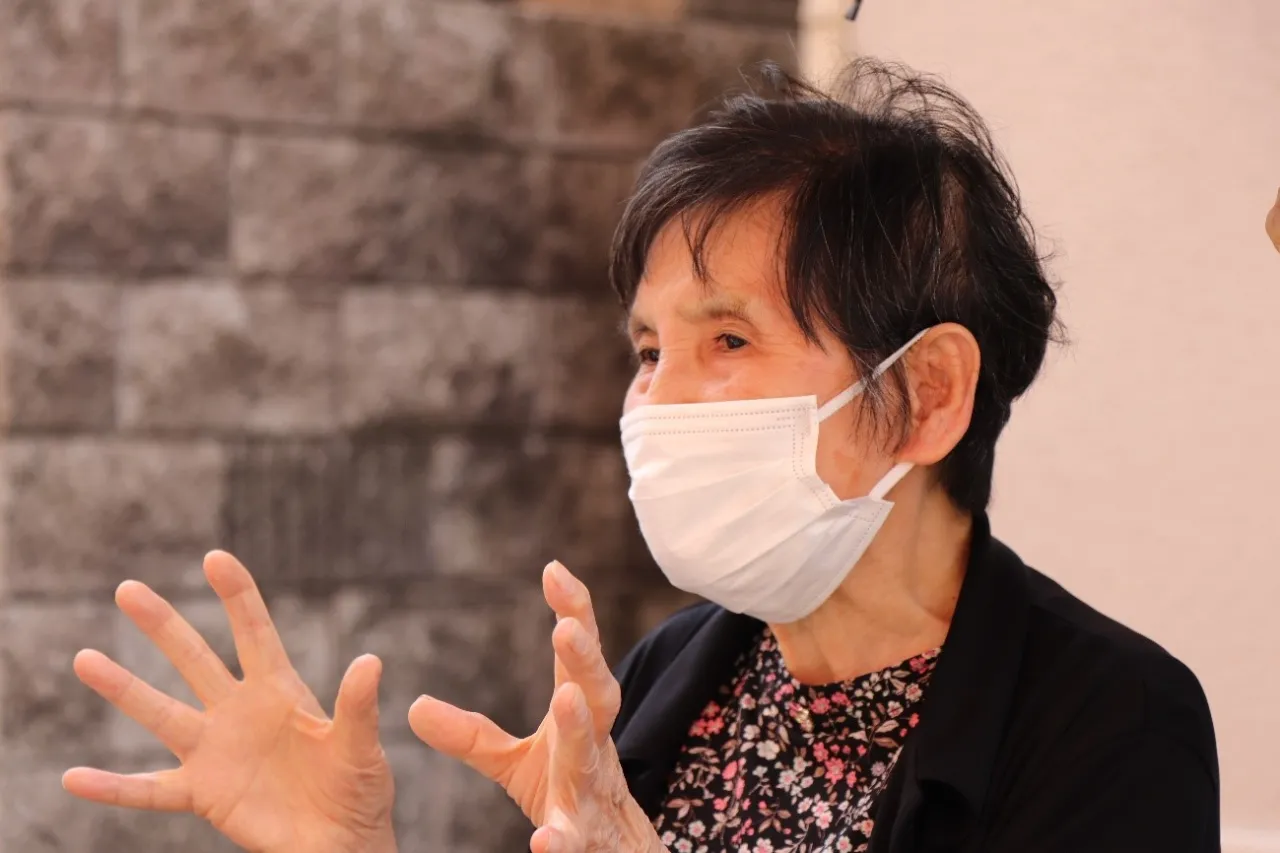
Still haunted by memories after 76 years
Kiriake's story is not just about the physical mayhem caused by nuclear weapons, but also the corrosive and traumatic mental damage suffered by the victims.
Kiriake recalls that soon after that dark day, she was crossing the charred ruins of the city when she tripped over a large black stone-like block. As the mass moved unsteadily, Kiriake took a closer look, only to realize it was the charred and curled-up body of a child who wouldn't have been older than three.
During a visit to an army hospital to look for her uncle, Kiriake was stopped in the corridor by a little girl, who grabbed the hem of her pants and kept repeating: "Please find my mom... find my mom." Kiriake remembers telling the little one, "Once I find your mother, I will let her know that you are here. Please let me go."
Unable to forget the little girl's crying face, a worried Kiriake visited the hospital again the next day. Though she looked all over the place, she could never find the girl again. "Sometimes I dream of her and wake up in the middle of the night. Seventy-six years have passed, but the memories still haunt me."

Critical medical care by the ICRC
Due to radiation exposure, Kiriake stayed unwell during the August of 1945. But it was after mid-September that she began to show symptoms of the so-called "A-bomb disease", such as hair loss, bleeding gums and bruise-like spots on her body.
Following the atomic bombing, radioactive "black rain" had fallen on the city of Hiroshima, leaving residual radiation in the area. People who survived the bombing were exposed to it as they walked around, looking for their families and friends in the ruins. Kiriake was one of them.
"I must have been exposed to the radiation. I could not help but think that if I die, at least I will be relieved of my sufferings and worries."
Kiriake's mother came to know about a foreigner doctor who had medicines that were helping a lot of people. Keen to help Kiriake, her mother went to the Red Cross Hospital to look for Dr Marcel Junod, the Swiss national who was the first foreigner doctor to have arrived in Hiroshima in the aftermath of the bombing.
For Kiriake too, the medicines provided by Dr Junod as well as the dedicated care of her family saved her life. "I am grateful that I lived up to be 91, thanks to Dr Junod's medicine," she said, expressing her gratitude also to Savioz, who is the current head of the ICRC's delegation in Tokyo and a successor to Dr Junod, 76 years down the line.
Dr Marcel Junod
On 9 August 1945, Dr Junod had arrived in Japan as head of the ICRC delegation. This was the very day the second atomic bomb in human history was dropped, this time on Nagasaki.
When Dr Junod heard about the devastation in Hiroshima, he immediately began to negotiate with the Supreme Commander of the Allied Powers (SCAP), known as the General Headquarters (GHQ) in Japan, and called for their assistance for the victims. On the morning of 8 September, he set off for Hiroshima with around 15 tonnes of medicines procured from the GHQ.
The center of the city was a sort of white patch, flattened and smooth like the palm of a hand. Nothing remained... Around its edge was a red belt, marking the area where houses had burned, extending quite a long way further, difficult to judge from the airplane, covering almost all the rest of the city.
From 'The Hiroshima disaster – a doctor's account'.
Dr Junod witnessed Hiroshima turn into a "white patch". Hospitals were unable to provide proper medical care and numerous people were left to die all over the city. The medicines brought by Dr Junod were the only hope for those who had suffered from grievous injuries, just like Kiriake.
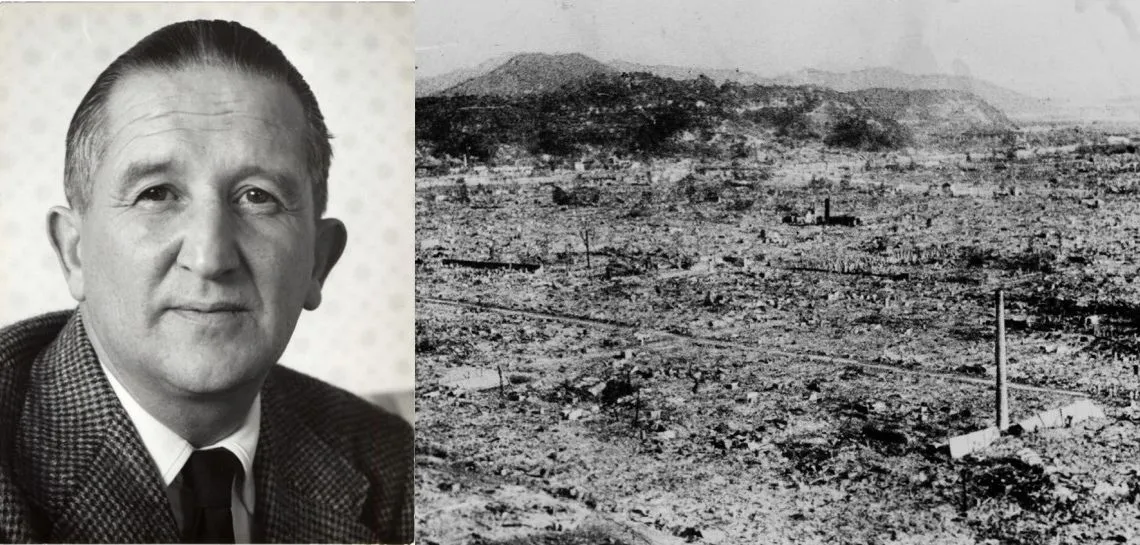
Abolishing nuclear weapons and achieving global peace
After a nearly three-hour meeting, during which Savioz listened to every word attentively, he said,
I would like to raise a question to the leaders and citizens around the world. How can one think that nuclear weapons guarantee security when we hear Kiriake's story? How can weapons that are capable of such a level of destruction and despair be said to be in our own interest?
The issue of nuclear weapons is often treated as a complex subject in the global political arena. It is said major powers possess nuclear weapons or go under the nuclear umbrella because they are "necessary evil" for maintaining balance. Human dignity is left behind in that argument. The nuclear weapons nowadays have become powerful. They can cause enormous damage to people and the environment. Compared to them, the bombs dropped on Hiroshima and Nagasaki might as well be called toys.
"We should deeply respect hibakushas for seeking solutions but not revenge," said Savioz.
"Younger generations, who have never experienced the atomic bombing, should pass on the testimonies of hibakusha so that they are never forgotten. They should learn the histories of Hiroshima and Nagasaki and share the lessons with the next generations in order to prevent human beings from making the same mistakes again."
